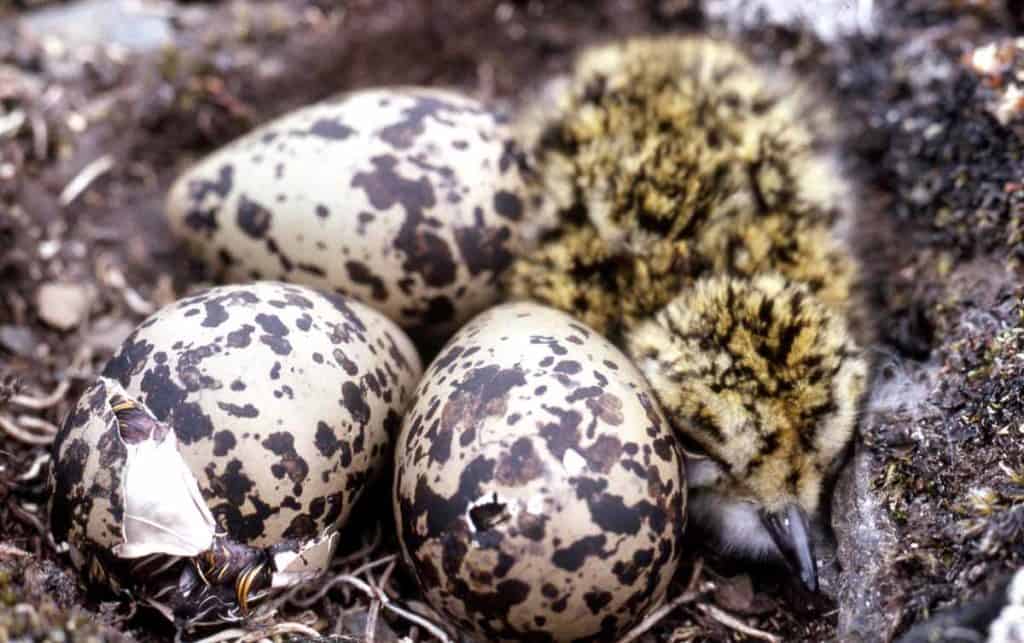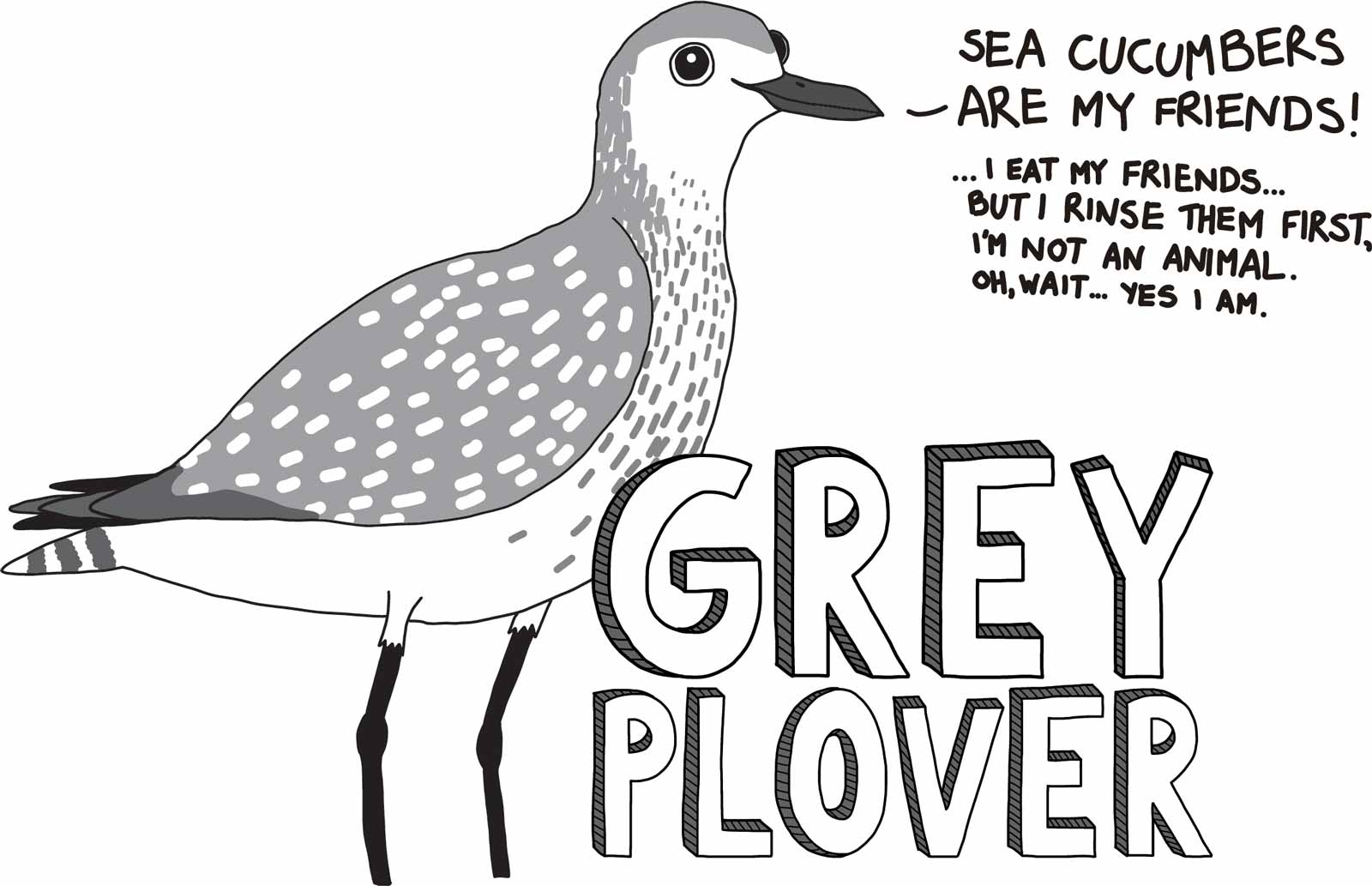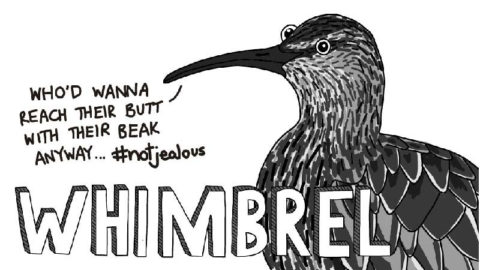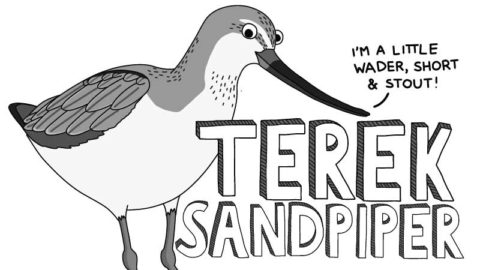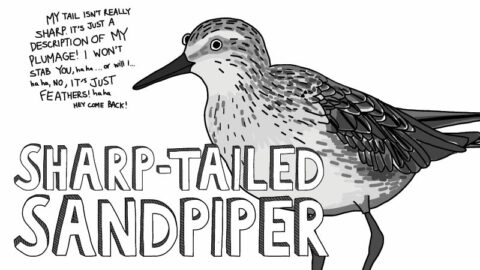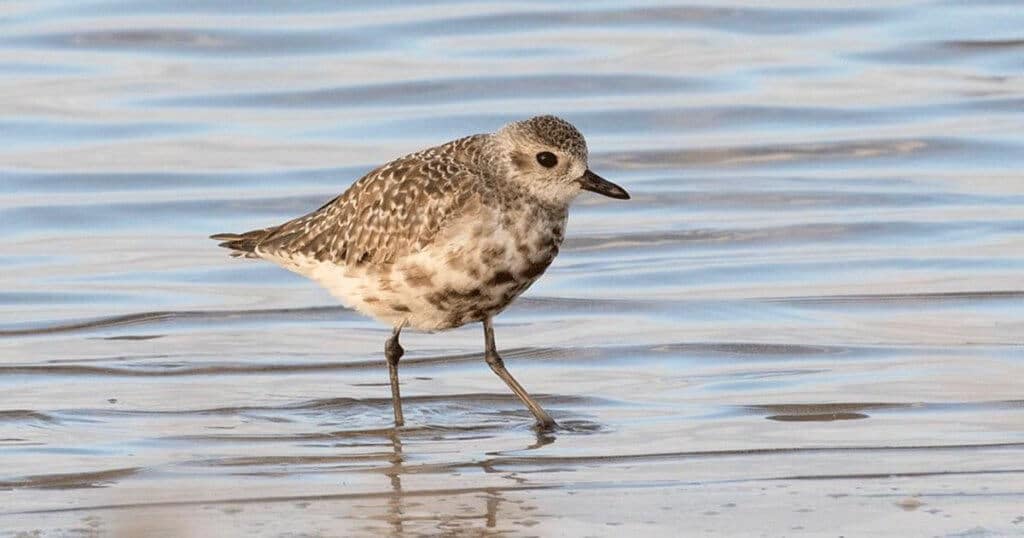
Also known as the Black-bellied Plover or Grey Sandpiper, the Grey Plover, Pluvialis squatarola, is a shorebird of medium size with long dark legs, a sturdy black bill and a large head with dark eyes.
Both males and females have a similar non-breeding plumage. The upper body is a pale brownish-grey, with a mottled brown crown and neck. The underbody is whitish-grey, and the tail is white with black or brown barring. White colouration marks their forehead and they have a above a brown eye stripe.
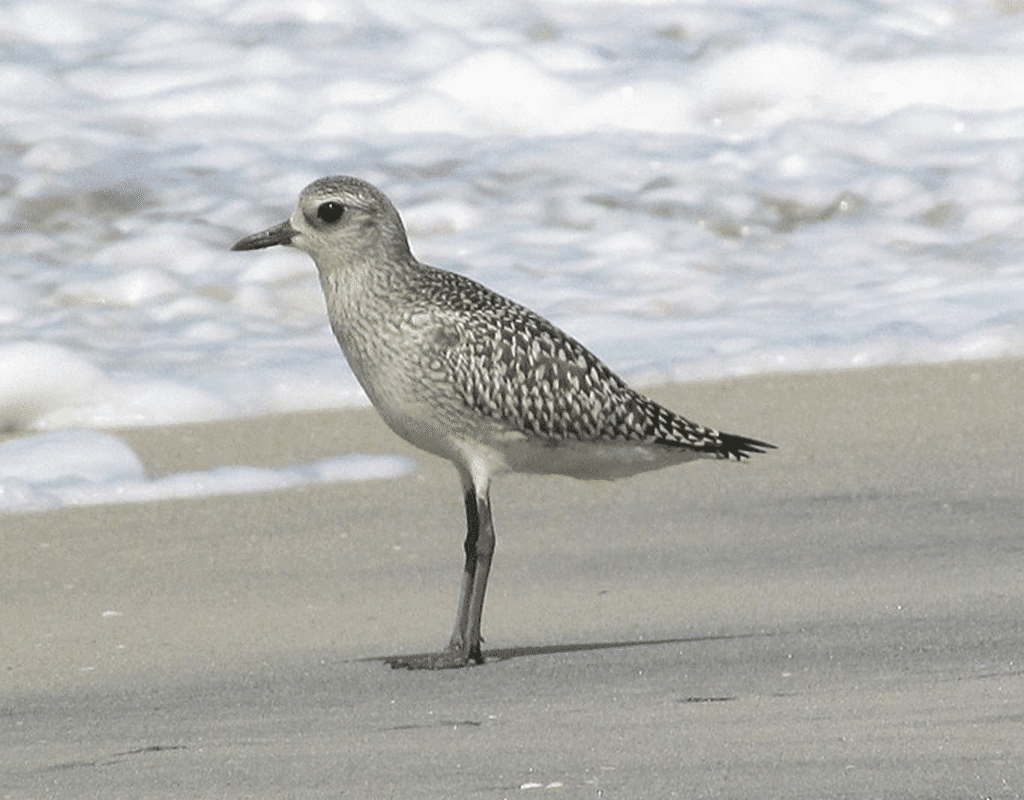
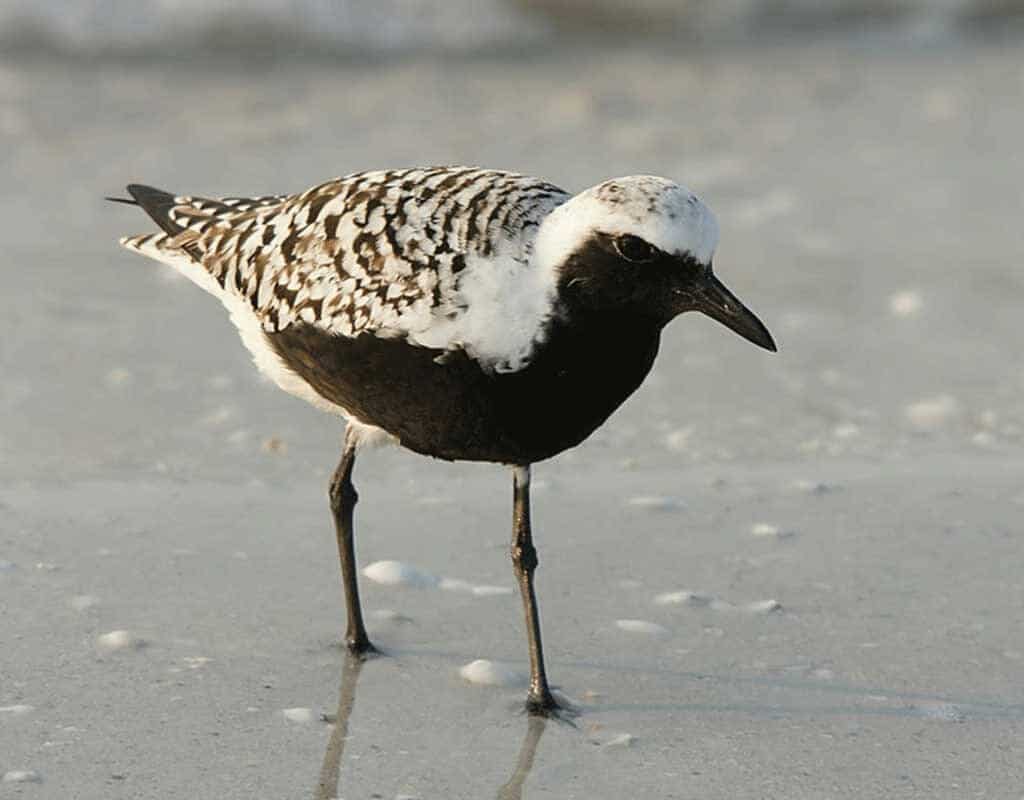
Black and white are the main featured colours of the breeding plumage, which provides Grey Plovers with better camouflage when in the dark and snow-covered areas of the Tundra.
The face and underbody of male Grey Plovers are black. The crown and nape are white with black streaks and the rest of the upper body is black with white marks. Female breeding plumage is similar to that of the male, but black areas appear more brown and white flecks mark the belly. Juveniles can be distinguished by a brown streaking on the face, neck and breast. The pale areas on the body will also appear to have a slight gold or yellow tinge.
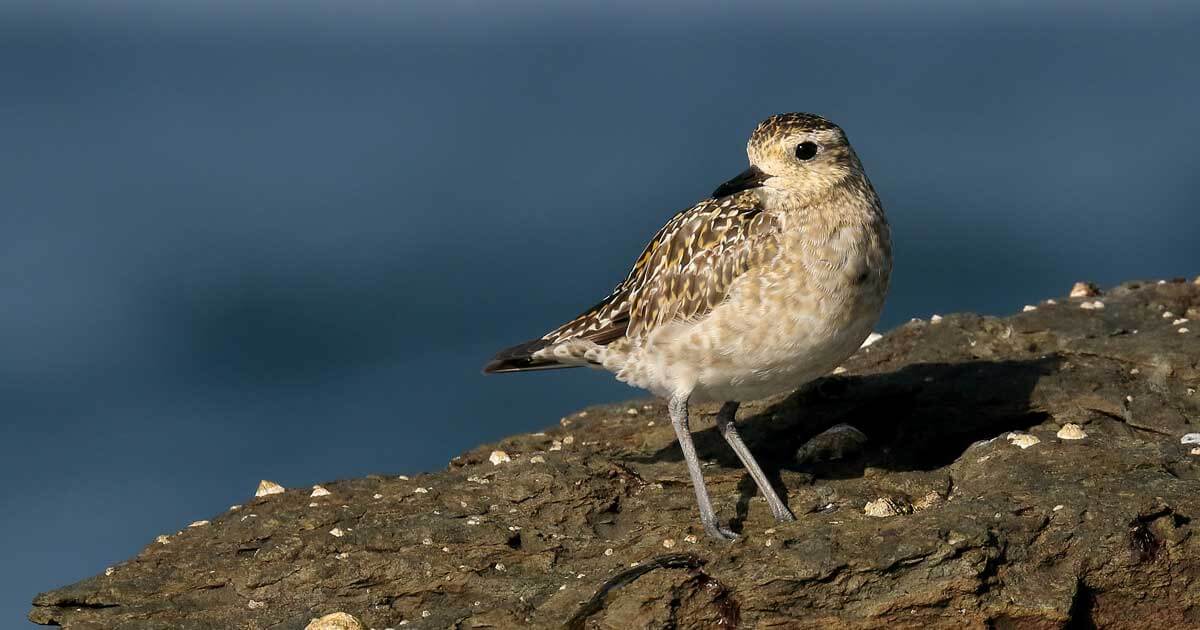
Grey Plovers feed mostly during the day using a running, stopping and pecking motion to find their prey, using their eyes to search for cues of movement. They have a particular taste for sea cucumbers and will also eat molluscs, polychaete worms and crustaceans. Occasionally they will feed on seeds and vegetation.
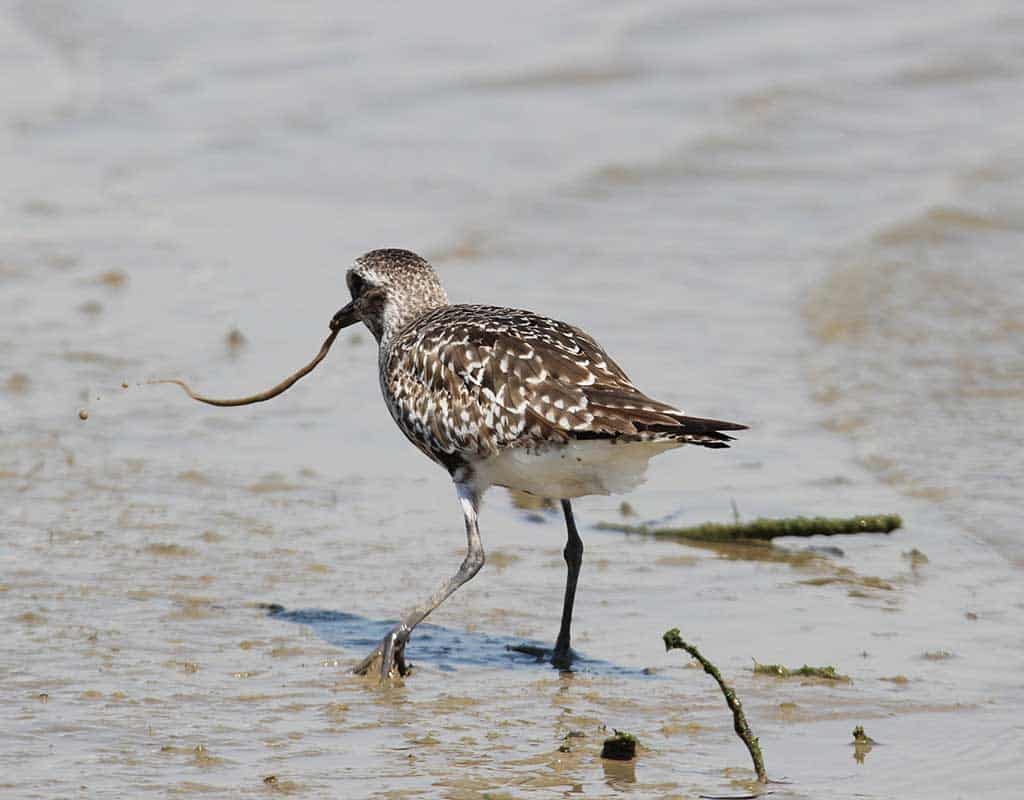
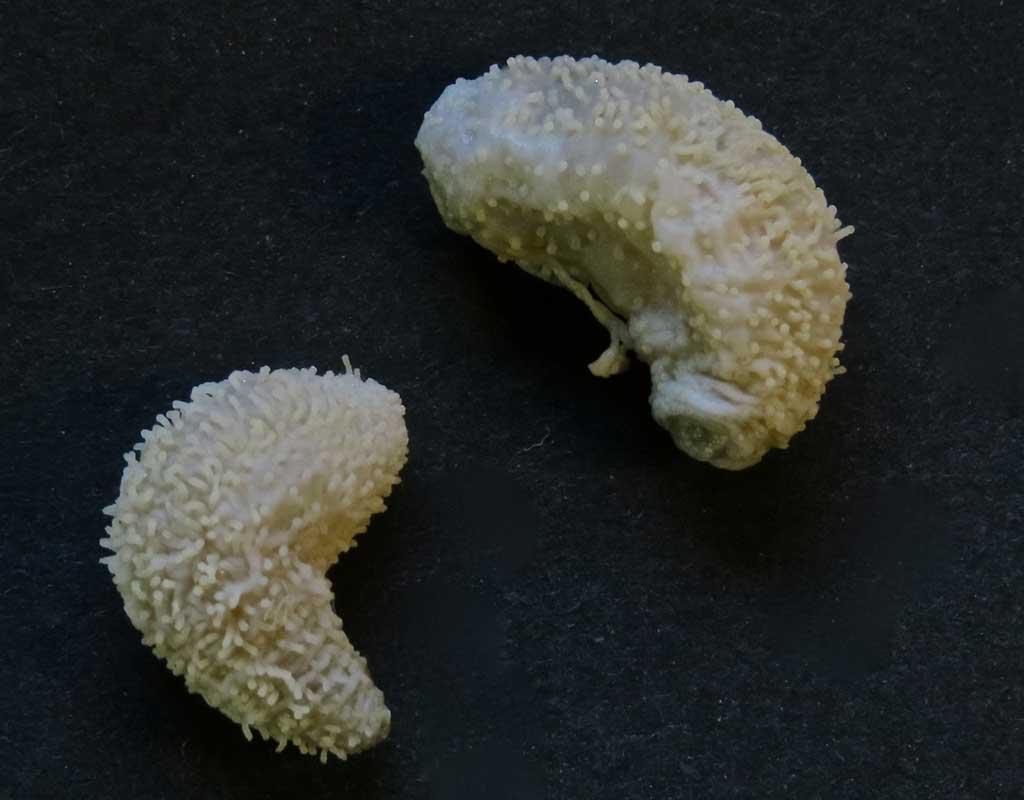
The Grey Plover has been recorded both inland and along the coasts of all states around Australia, especially the western and southern coasts. They inhabit lagoons and estuaries with mudflats or sandflats. They are also occasionally found on rocky coasts and sandy beaches, as well as near-coastal lakes and swamps. Most of the Grey Plovers that spend their non-breeding season in Australia are female, however, we don’t know why this is the case.
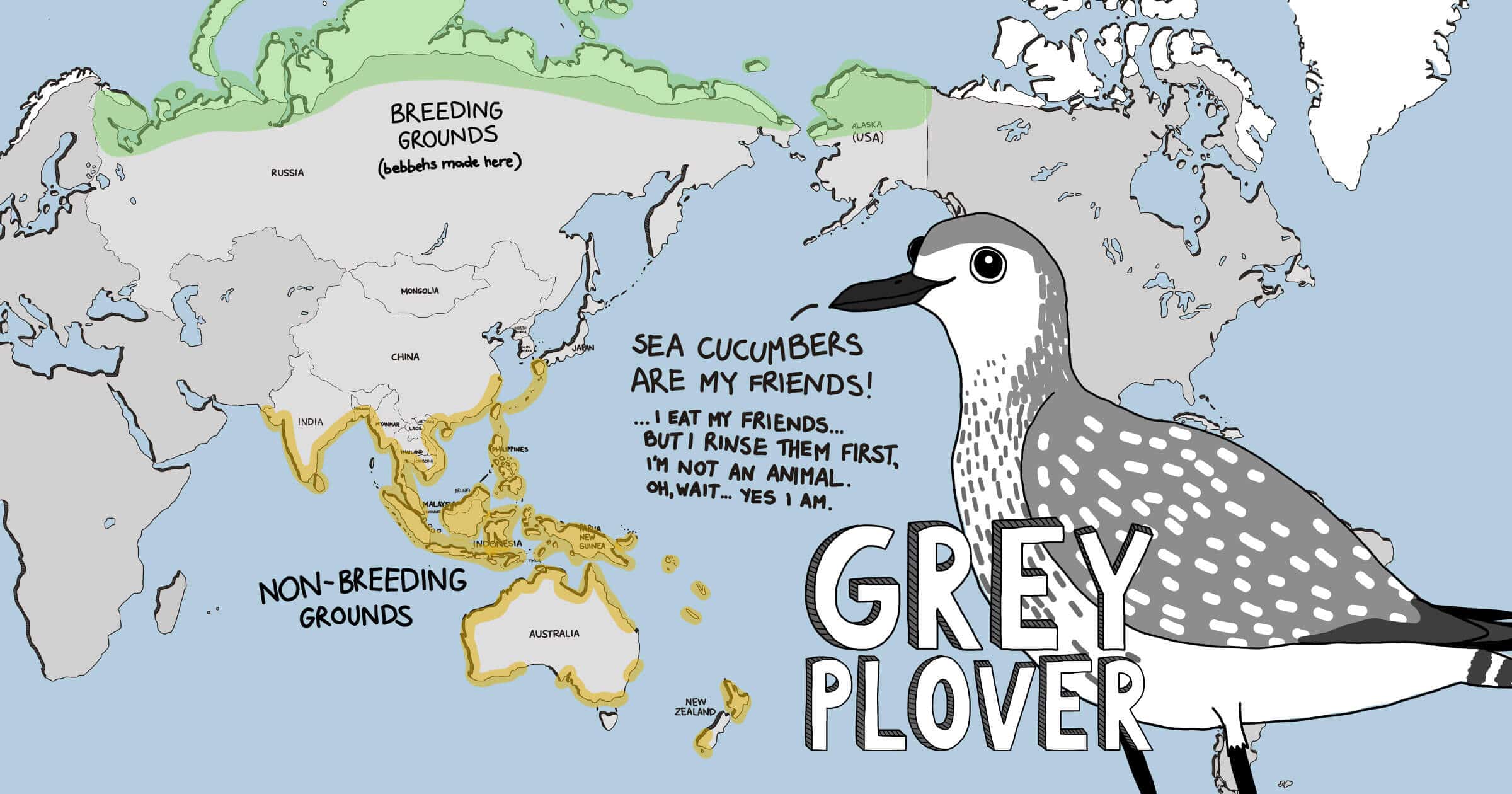
The Grey Plover breeds on Wrangel Island in Northern Siberia as well as Alaska and Canada, often at higher elevations and in drier areas. Stones and plant material line the nests made in shallow scrapes, where both mum and dad will incubate between three to four eggs and feed the chicks. The female will normally leave after two to three weeks.
